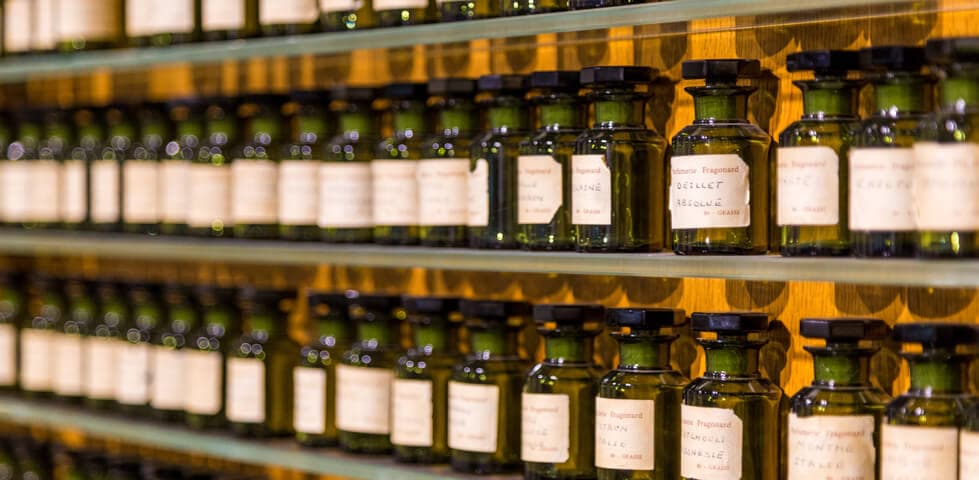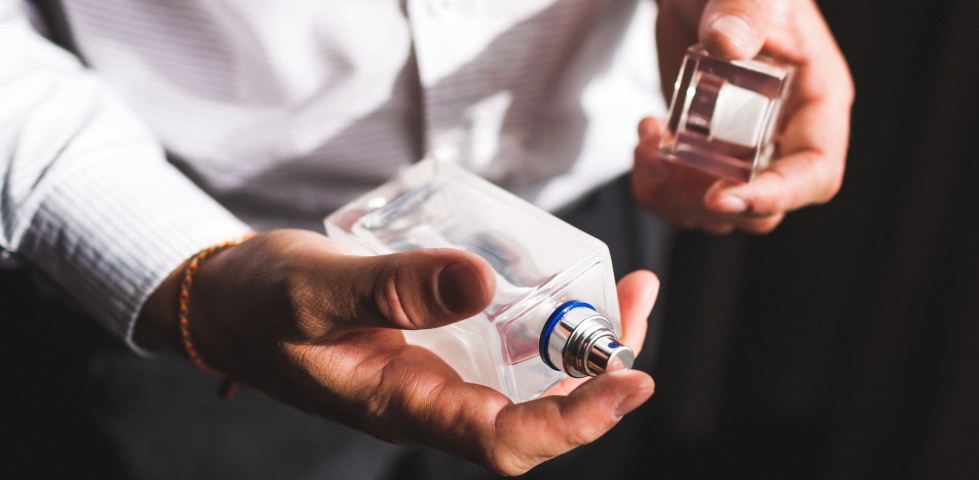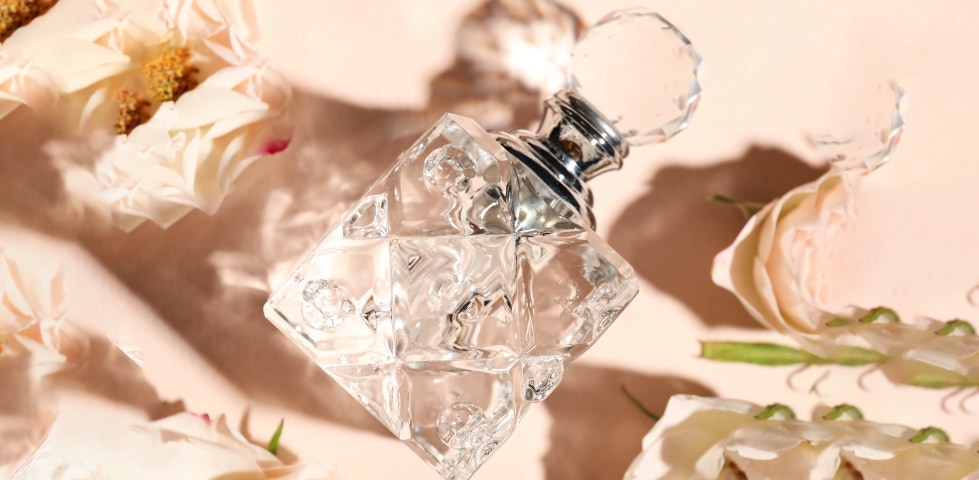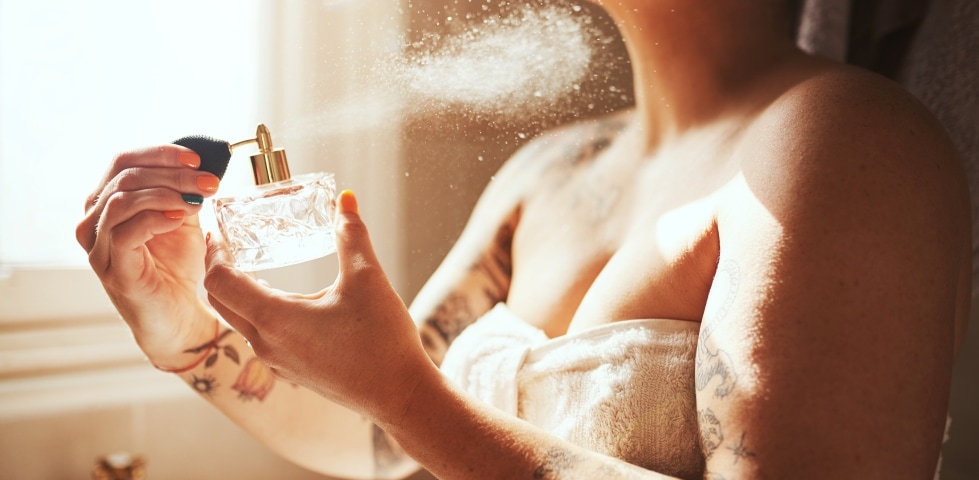
Perfume manufacture: This is how your favourite fragrance is made
Luxe fragrances beguile our senses and bring a touch of luxury to our day-to-day life. But have you ever wondered how a perfume is manufactured? Perfume manufacture combines art and science in a creative process that requires a love for detail and true devotion. Only then do these sensual compositions come into being, awakening feelings, making memories and enticing us into foreign worlds.
20 October 2023 • 5 min. reading time
Table of contents
Perfume manufacture step by step
Step 1: The idea comes first
What would an artistic process like the manufacture of perfume be without the necessary inspiration? You’ve got it: an olfactory disaster. For this reason, the first idea is the basis of every fragrance creation. Sometimes little more than a vague hunch, it usually comes from the perfumer themselves. It can, however, also come from a creative team during a brainstorming session. In any case, it is recorded in what is called a brief. The back story of the composition, the target group and a rough idea of which nuances and ingredients it should contain are noted during this process.
The idea can spring from many things. Sometimes it is itself a memory of a special moment: a windy day by the sea or a delicate spring morning that tickles the nose of the creator. Or a melody, a poem or a certain picture that inspires a lively fragrance that reflects the particular feelings. The muse is just as versatile as the fragrance composition itself.
Step 2 of perfume manufacture: The nose does the fine tuning
Now the main work of the perfumer begins, who in specialist circles is also affectionately called “the nose”. With meticulous precision and the necessary expertise, they set about sniffing ingredients, adjusting nuances and creating harmonies. Perfume manufacture is craftsmanship and art in equal measure. Only when both areas seamlessly interlock does a new star appear in fragrance heaven.
Every perfumer’s approach is extremely individual. Some fragrance artists let their creations emerge from practically nothing. Others run a fragrance library, from which they draw inspiration. Yet again, other “noses” fall back on tried-and-tested formulas, which they expand and refine in accordance with the brief. The basis of every good fragrance is, however, the fragrance pyramid, which is divided into the top note, the middle note and the base note.
It doesn‘t matter how perfume is manufactured: in every case, an outstanding sense of smell is a must. Because this is the perfumer’s greatest asset and at the same time their most important tool. After all, there are around 200 natural and 2000 synthetic fragrances available to them that need to be structured and united. Wondering how these are manufactured? More on this later.
Step 3: The formula at the heart of the manufacture of a perfume
The nose has done its work: The perfume pyramid has been taken into consideration, the individual components brought into unison and the volatility and intensity of the nuances harmonised. The result: a raw version of the formula which contains all the provisional information for manufacturing the perfume. Now the perfumer subjects it to a sequence of tests to evaluate the olfactory total work of art. After all, the theory should correspond to expectations in practice.
The composition is diluted in different concentrations of ethanol. As a result, the intensity continues to decrease. The perfumer now sniffs out the tiniest flaws in the composition. Is one note too dominant or one too volatile? Important to note: The individual dilution levels are smelled both on the skin and on blotting paper (mouillettes). By doing this, the nose can evaluate quite precisely the diffusion and staying-power of the fragrance. Deviations are noted and corrected in the formula. Once they have finally achieved perfection, the perfumer makes a concentrate of the new perfume.
Step 4: Dilution of the freshly manufactured perfume
So that all the components can fully develop, the concentrate is now allowed to mature for several weeks. It rests in a small glass bottle at around 13°C. The perfumer determines the exact duration through their nose and experience. Once it is fully matured, the perfume is diluted. The tried-and-tested ethanol is used for this. From a chemical viewpoint, this is a monovalent alcohol that does not adulterate the smell of the concentrate. Quite the opposite – the ethanol preserves the individual fragrances, which are shown off to their best advantage in the end product. The particular percentage of dilution depends on the final result:
- Perfume/extrait de parfum: Between 20 and 30% perfume, lasts up to eight hours
- Eau de parfum (EdP): Between 10 and 20% perfume, lasts up to five hours
- Eau de toilette (EdT): Between 3 and 5% perfume, lasts under five hours
- Eau de cologne (EdC): Between 1 and 3% perfume, lasts around 2 hours
Perfume manufacture step 5: Finalising the fragrance
The final step in perfume manufacture is the maceration. All components should combine harmoniously with each other and thus give the fragrance its finishing touch. What happens in the maceration process? It’s simple: The alcohol dissolves the last fragrance molecules from the raw materials. The creation develops its character and soul. After a final filtration, the manufacture of the perfume is complete.
Natural v. synthetic fragrances in perfume manufacture
When it comes to pure smell alone, you will not be able to tell the difference between natural and synthetic fragrances. Also, with regard to staying power and intensity, both versions are the same. However, the advantage of synthetic fragrances is obvious: The perfume manufacture is simpler and correspondingly cheaper.
Natural fragrances and their manufacture
The majority of natural fragrance oils come from plants. There are different processes for obtaining these essences.
- Distillation over steam: Chopped roots or leaves are placed in a pot with hot steam, which releases the essential oils. The mixture is condensed in a cooling chamber and the oil can be separated from the water. In this way, the natural fragrances from rose, cinnamon or vetiver can be obtained for the perfume manufacture.
- Extraction: With this method, flowers, seeds or resins are rinsed with a solvent, which is then removed again under vacuum. A fragrant, oily substance remains, which is macerated with alcohol. This is also removed to obtain the absolute. In this way, the perfumer extracts the natural fragrances of jasmine, narcissus or tonka bean.
- Cold pressing: This process is designed especially for the peel of citrus fruits. The essential oils are pressed out and finally separated with a centrifuge.
Along with natural fragrances from plants, there is also a series that comes from animal sources. A famous representative is, in particular, musk, which comes from a gland of the deer of the same name. But, unfortunately, for 1 kg of musk fragrance oil around 160 deer must lose their lives. Therefore, the production of these substances synthetically is thoroughly welcome from the point of view of animal welfare.
This is how synthetic fragrances are manufactured
Chemical synthesis processes are quicker and cheaper. Fragrances can be produced in the laboratory itself and, above all, in consistent quality. Expensive vanilla is an example of this. Normally, the manufacturers would need tons of valuable vanilla flowers to manufacture 1 kg of the coveted fragrance for perfume. But with the help of what is known as aromatic synthesis, it can be obtained directly from resins and even plant residues, as the starting material, lignin, is available in large quantities in the cell walls. The end product: a crystalline material with virtually the identical texture chemically and the intense vanilla fragrance.
FAQ
Takeaway
It doesn’t matter whether it’s a standard perfume, niche product or luxury brand: perfume manufacture is not only a long process, it is also an artistic craft. Even if there is scarcely any difference from an olfactory standpoint: natural fragrance materials are more elaborate and therefore more expensive in the manufacture of perfume than the synthetic stand-ins. Nevertheless – what would our day-to-day life be without the sensual fragrances that enchant our noses? Discover your new favourite fragrance now!




